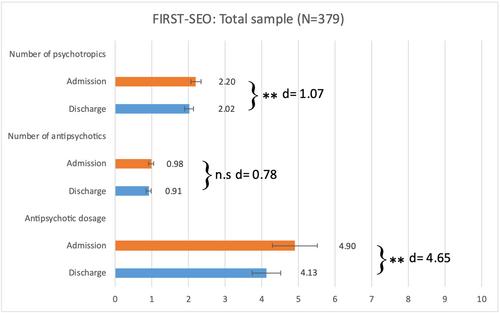Impact of the emotional development approach on psychotropic medication in adults with intellectual and developmental disabilities: a retrospective clinical analysis
Abstract
Background
Compared with the general population, adults with an intellectual developmental disorder (IDD) are more likely to develop mental health problems and to receive high levels of psychotropic medication, particularly antipsychotics. The emotional development (ED) approach may help to better understand the nature of challenging behaviour (CB) and tailor treatment and support accordingly. The aim of this retrospective study was to investigate the impact of the ED approach on the prescription of psychotropic medication during inpatient psychiatric treatment.
Methods
The clinical data of 1758 patients were analysed within a retrospective study design over a period of 12 years. ED level was assessed (1) for the first time (INITIAL-SEO), (2) during a previous hospital stay (PAST-SEO) or (3) not at all (NO-SEO). The effects of the ED assessment and the respective intervention during the current admission on the number of psychotropics and the number and dosage of antipsychotics were analysed for the total sample, including those with CB, autism spectrum disorders and psychosis. Group differences were analysed by a chi-square test and a one-factorial analysis of variance. For analysing the impact of the application of the ED approach on psychotropic medication, a covariance model was applied. Changes between the subsamples were analysed by t-tests for dependent samples.
Results
The ED approach had a significant impact on reducing the overall amount of psychotropic medication and the dosage of antipsychotics in all patients with IDD. These effects were mainly attributable to those showing CB. In patients with autism spectrum disorders, the developmental approach reduced the number of antipsychotics. No effects could be observed in patients with psychosis; in this subsample, both the number and dosage of antipsychotics increased.
Conclusions
The application of the ED approach in the current hospital stay reduced the number of psychotropic drugs and the number and dosage of antipsychotics, especially in those patients with IDD and CB, but also in those with autism spectrum disorders.


 求助内容:
求助内容: 应助结果提醒方式:
应助结果提醒方式:


